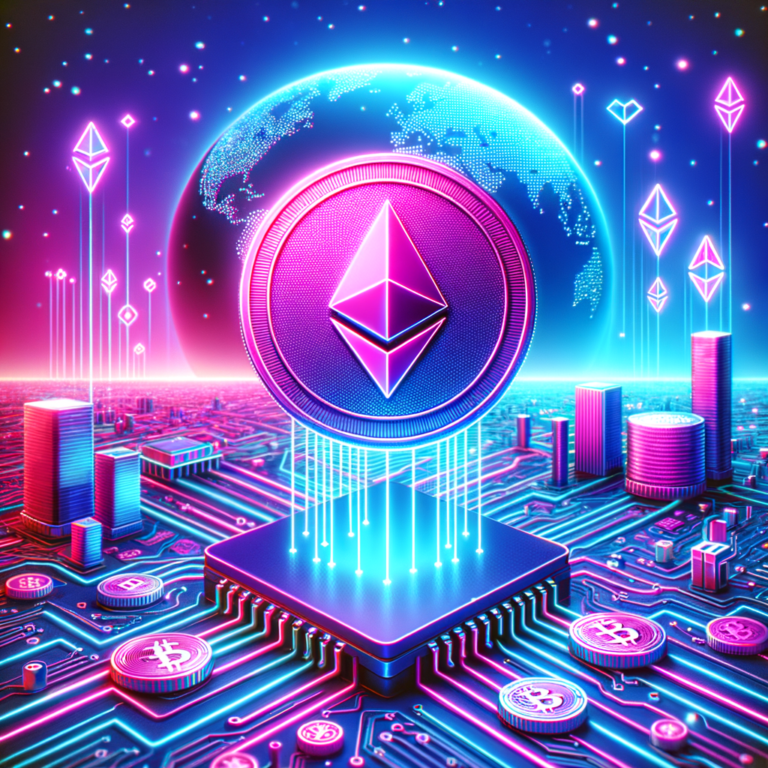Exploring the Impact of NFTs in Virtual Reality
The intersection of non-fungible tokens (NFTs) and virtual reality (VR) is heralding a new era in digital ownership and immersive experiences. As we delve deeper into the digital age, these technologies are not just reshaping the concept of art and property, but are also setting new standards for how we interact with digital content. This article explores the impact of NFTs within the virtual reality landscape, examining technological foundations, current trends, notable case studies, inherent challenges, and the future prospects of this intriguing amalgamation.
Introduction to NFTs and Virtual Reality
NFTs, or non-fungible tokens, represent uniquely identifiable assets verified using blockchain technology, which ensures the authenticity and ownership of digital items. Unlike traditional cryptocurrencies, each NFT is distinct and cannot be exchanged on a one-to-one basis, making them perfect for representing rare or unique items. Virtual reality, on the other hand, is a simulated experience that can either replicate the real world or create entirely fantastical environments through VR headsets and sensory equipment. When these two technologies converge, they create a new paradigm for digital interaction and ownership.
The coupling of NFTs with VR technologies allows for a tangible sense of ownership over digital assets within virtual environments. This combination not only enhances the user experience by adding a layer of exclusivity and authenticity but also opens up myriad opportunities for artists, gamers, and developers by enabling them to create and trade value in virtual spaces. As VR continues to evolve, the integration of NFTs stands to revolutionize the way we perceive and interact with digital realms.
The synergy between NFTs and VR goes beyond mere entertainment, extending into realms like virtual real estate, digital art galleries, and interactive learning environments. These applications demonstrate the practical utility and the immersive potential of combining NFTs with virtual reality, making them an exciting area for ongoing development and investment.
Technological Foundations of NFTs in VR
The technological backbone of NFTs in VR is primarily built on blockchain technology, which provides a decentralized and secure ledger for recording transactions and ownership. The blockchain’s inherent security and transparency features make it an ideal foundation for managing digital assets in VR, ensuring that every transaction or transfer of ownership is immutable and traceable.
To integrate NFTs within VR platforms, developers utilize smart contracts, which are self-executing contracts with the terms of the agreement directly written into code. These contracts automatically enforce and manage the rules of interaction and transaction between users and assets within the VR environment. This automation reduces the need for intermediaries and enhances the user experience by providing seamless, real-time interactions.
Moreover, the use of blockchain and smart contracts in VR with NFTs ensures scalability and interoperability among different virtual worlds and platforms. This interoperability is crucial for building expansive and connected virtual landscapes where assets can be used and acknowledged across multiple VR environments, enhancing the user’s investment in digital assets.
Current Trends in NFT Integration with VR
Currently, one of the most prominent trends in the integration of NFTs with VR is in the gaming industry. Virtual worlds such as “Decentraland” and “The Sandbox” have pioneered the use of NFTs to represent in-game assets like land, apparel, and art, which players can buy, sell, or trade within the VR platform. These assets provide players with not only a source of entertainment but also potential economic benefits, as the rarity and uniqueness of NFTs can increase their value over time.
Another growing trend is the virtual art galleries and exhibitions where artists display their digital artworks as NFTs in a VR setting. This not only helps in attracting a global audience but also enables direct sales and interactions without physical boundaries. The immersive nature of VR gives digital art a new dimension, allowing viewers to experience art in more engaging and interactive ways.
Additionally, there is an increasing adoption of VR and NFTs in educational and training modules. NFTs are being used to certify and verify educational achievements or to handle proprietary educational content in a secure manner within VR environments. This approach no ahead only makes learning more interactive but also ensures that educational credentials are tamper-proof and easily verifiable.
Case Studies: Successful NFT and VR Mergers
One notable case study is the virtual real estate market in “Decentraland,” where users purchase plots of land as NFTs. This virtual land can be developed, rented, or sold, creating an economic system within the VR world. The scarcity and unique location of each plot can significantly increase its value, mirroring the dynamics of the real-world real estate market.
Another significant example is the collaboration between major fashion brands and VR platforms to create and sell exclusive apparel as NFTs, which can be worn in virtual worlds or social VR spaces. This not only serves as a new revenue stream for designers but also enhances the social dynamics within VR by allowing users to showcase their individuality and status through unique digital fashion pieces.
Furthermore, the use of NFTs in virtual concerts and events has gained traction, where tickets are sold as NFTs, granting access to exclusive performances or experiences in the VR environment. This model has proven successful in increasing engagement and creating a collectible aspect of the event tickets, which can be saved as memorabilia or resold.
Challenges and Limitations of NFTs in VR
Despite the exciting possibilities, there are several challenges and limitations in the integration of NFTs with VR. One of the primary issues is the digital divide; access to VR technology and the understanding of NFTs are not universal, which can limit adoption and inclusivity. The high cost of VR equipment and the complexity of managing NFTs can also be prohibitive for many users.
Another significant challenge is the environmental impact of NFTs, particularly concerning the energy consumption associated with blockchain transactions. As the popularity of VR and NFTs…

